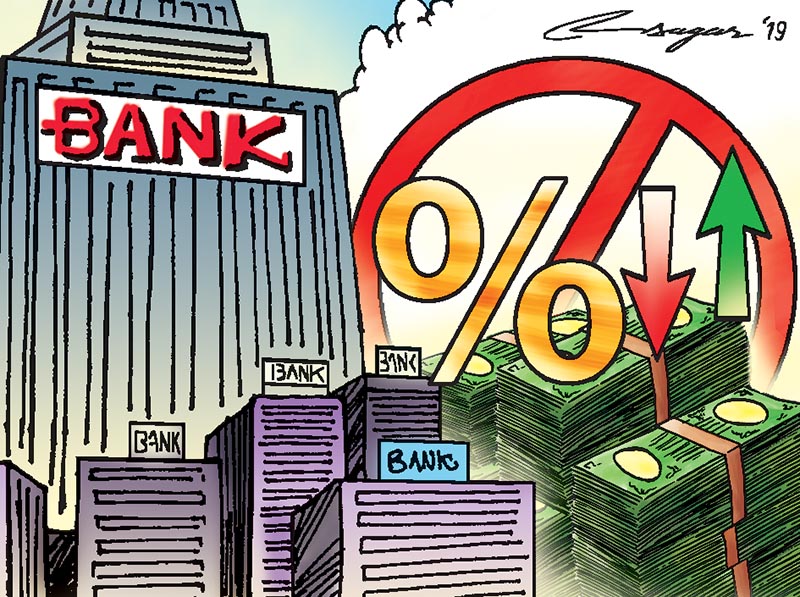Banking association: Not for interest cartelling
The objectives of a financial association should be promoting financial awareness, conducting research that supports innovation and lobbying the government as per the voice of the industry rather than lobbying for the interest rate
A banking association is similar to other professional associations, in that it gathers intelligent, like-minded professionals to provide participants with access to a variety of opinions and ideas. Such an association is beneficial for political participation, networking opportunities, improving the business climate and attaining opportunities for social participation.
Apart from the opportunities, the business organisation must be aware of the hindrances it may come across in the industry when it fails to execute those issues pertinent to the sector in a collective way. For example, if a market has sufficient liquidity and the banking organisations are competitive, the association will be successful in pushing the interest rate down, which is similar to the supply and demand theory of economics, where the interest rate is determined at the point of equilibrium.
The major thing to be considered here is that the association is beneficial for its members when the market is comfortable, otherwise the market will not be equilibrated due to the non-participation of all the institutions working in the same industry. Thus, it is of great importance either for all the organisations working in the same industry to participate or have views assembled for constructive and sustainable impact on the economy.
Studies show that the interest rate is determined by two forces: firstly the supplies of savings, derived mainly from households, and secondly the demand for investable capital, coming mainly from the business sector. Based on the cost of deposit, the bank’s lending rate is marked up.
The banking association is not a legal entity to determine the interest rate when Nepal has initiated financial sector reforms since the mid-1980s and Nepal Rastra Bank (NRB) has been implementing a comprehensive Financial Sector Reform Programme since 2001.
The American Bankers Association (ABA) was founded in 1875 and is the largest banking trade association in the United States, representing banks of all sizes. It is the united voice of America’s banks - small, regional and large - that together employ more than 2 million women and men working as the preeminent providers of financial services.
Either through the association or through mergers and acquisitions, bigger is always not essentially relevant to stabilising the economy. On December 14, 1998, the Canadian Minister of Finance announced that two high profile bank mergers would not be allowed to proceed because they were not “in the best interests of Canadians”. The minister’s decision was founded on three conclusions: The mergers would lead to an unacceptable concentration of economic power in the hands of a few banks; the mergers would result in a significant reduction of competition; and the mergers would reduce the government’s policy flexibility to address potential future prudential concerns.
Very simply put, the theme of association should not be in concentrating the economic power within the banking association through interest cartelling in the banking sector of Nepal as well. A survey based report released by the World Bank in March 2016 also declared that cartelling by the big banks always hurts the economy. The study was based on Kenya’s market.
The British Bankers Association is the trade association for the UK, with more than 200 member banks in over 50 countries. But it does not determine the interest rate, rather its main objectives are helping the customers, promoting growth and raising the standards and being a world class trade association in banking.
Thus, Nepal cannot remain an isolated economy. It has to unite the objectives of all the members in promoting growth and helping the customers.
As of mid-October 2018, there were 28 commercial banks, 33 development banks, 24 finance companies and 68 micro finance institutions having four different banking associations for each class of Bank and Financial Institutions (BFIs). In fact, the objectives of such a financial association should be promoting financial awareness, conducting research that supports innovation and growth and lobbying the government as per the voice of the industry rather than lobbying for the interest rate.
On the other hand, the cost of doing business is increasing, and the borrowers are hit hard due to increasing lending rates. Nepal Rastra Bank (NRB), a regulatory body of Nepal, has to be more careful as it has lots of regulatory responsibilities. However, the NRB has allowed banks to bring funds from foreign banks to address the current challenges. Similarly, NRB has a refinancing window of Rs 25 billion that can be provided for subsidiary loans.
Today, when the Cash and Capital to Deposit (CCD) ratio of the majority of the commercial banks has hit saturation, development banks and financial institutions are in a comfortable position and are in search of new lending markets. The bankers association should be aware that associating is not the solution to the current shortage of loanable funds. Instead the reason for the shortage must be identified. Similarly, the central bank, which deregulated the interest rate regime in the early 1990s, should not defend the interest rate cartel among the BFIs.
Sharma is branch manager, Kumari Bank, Hetauda






